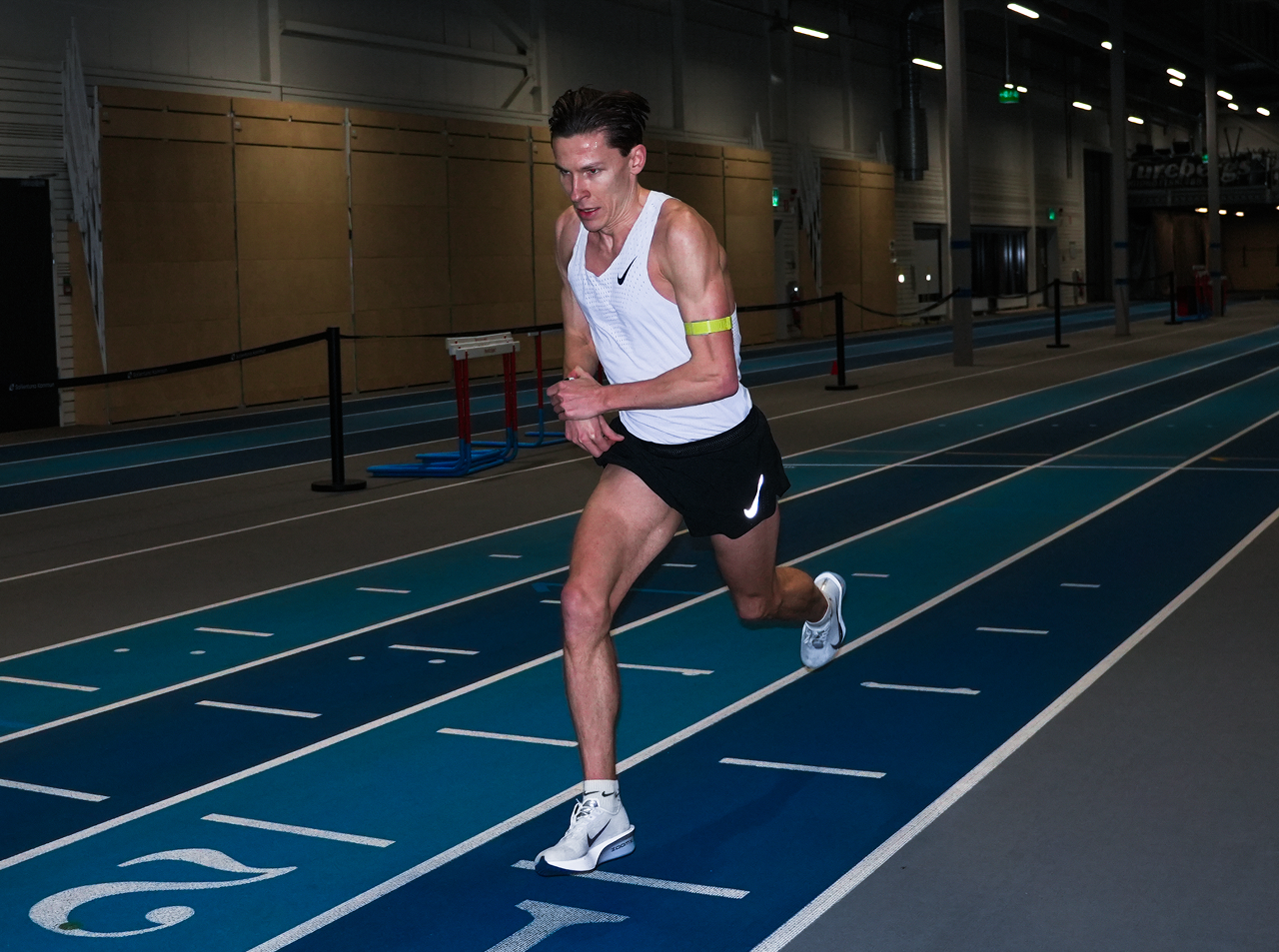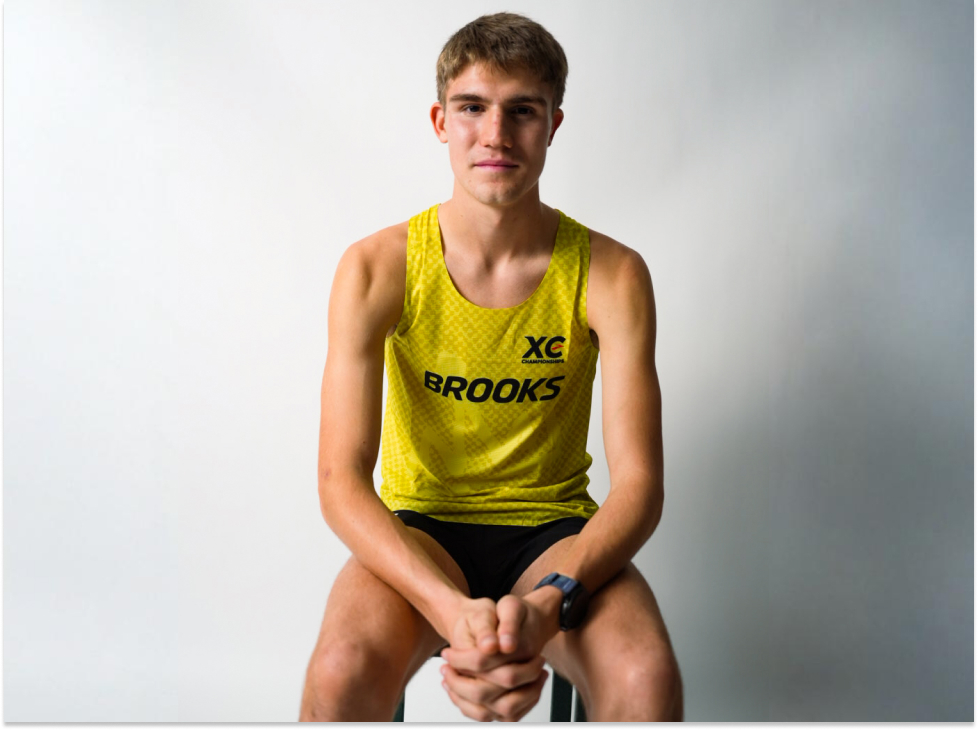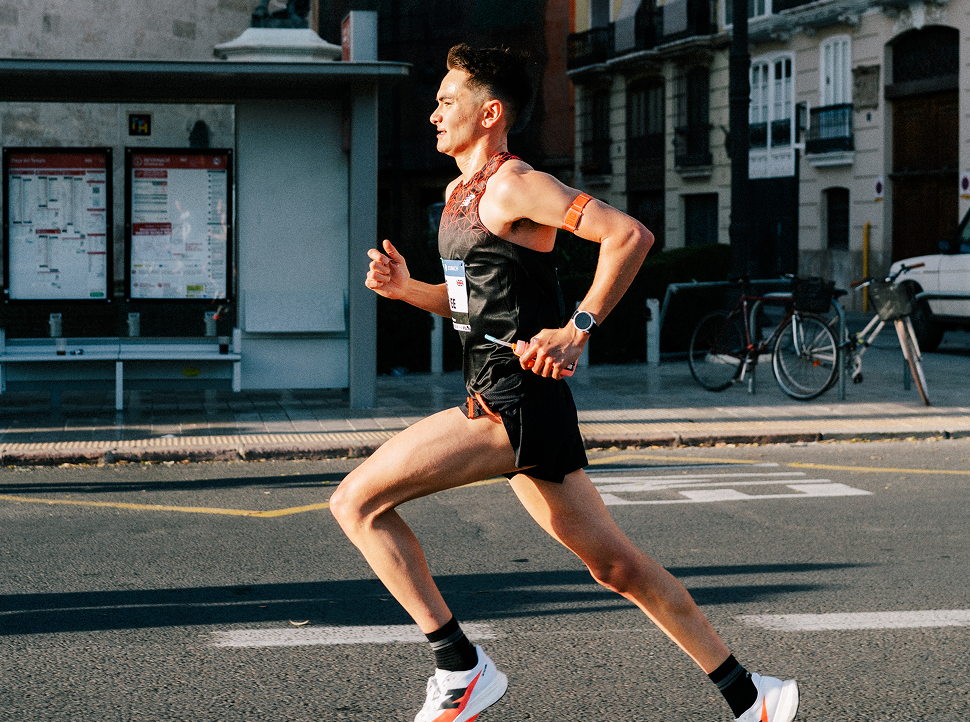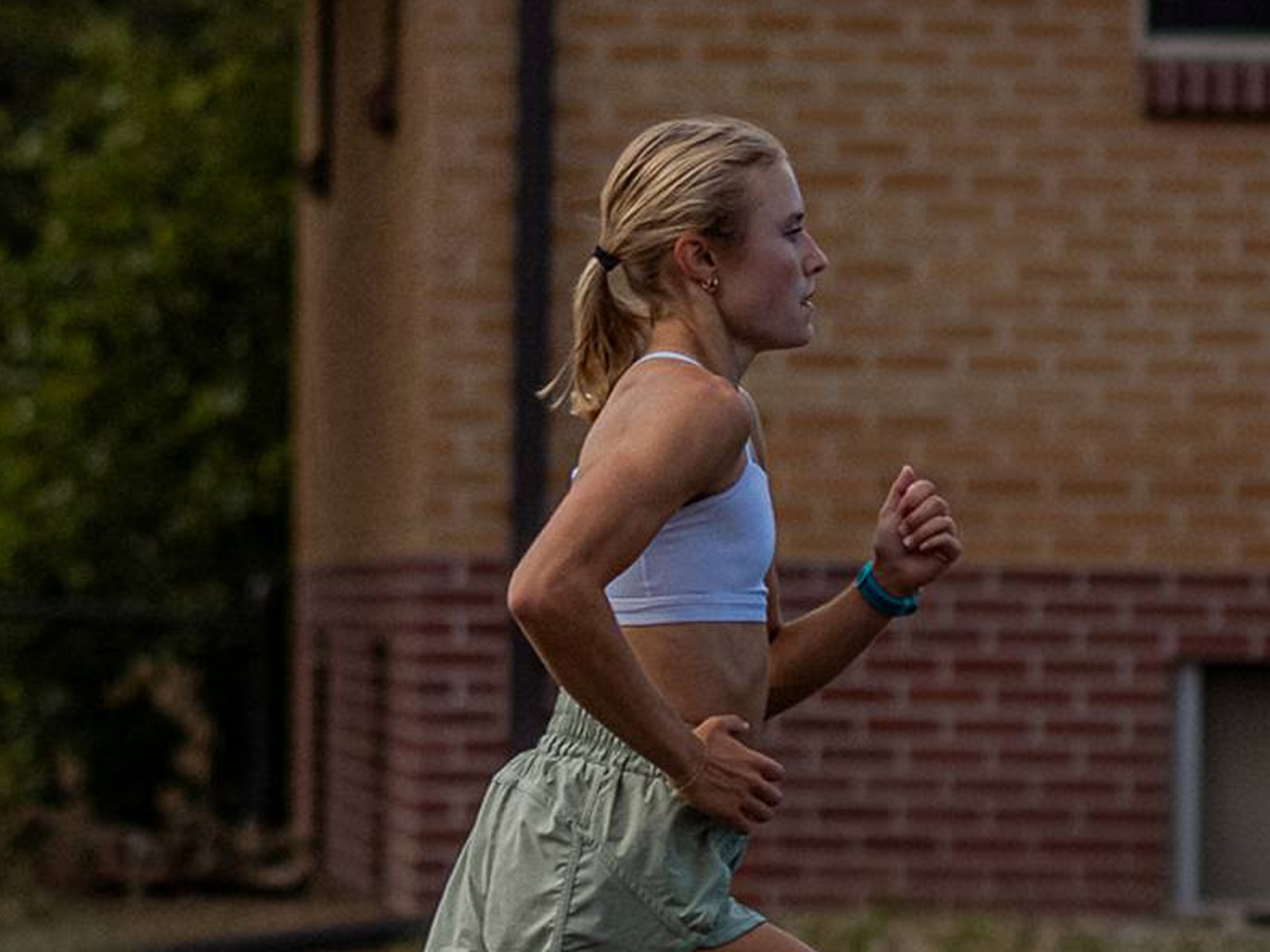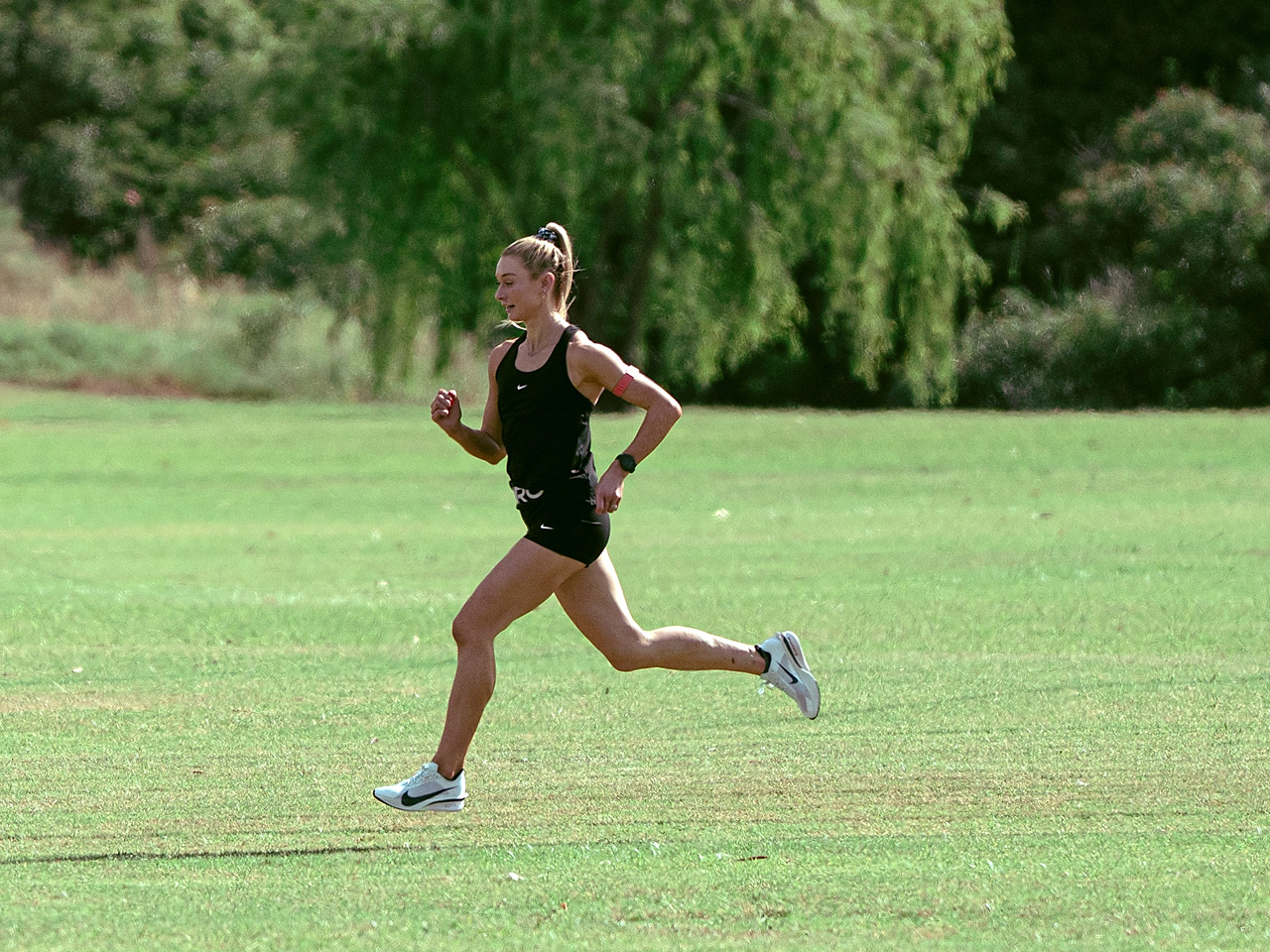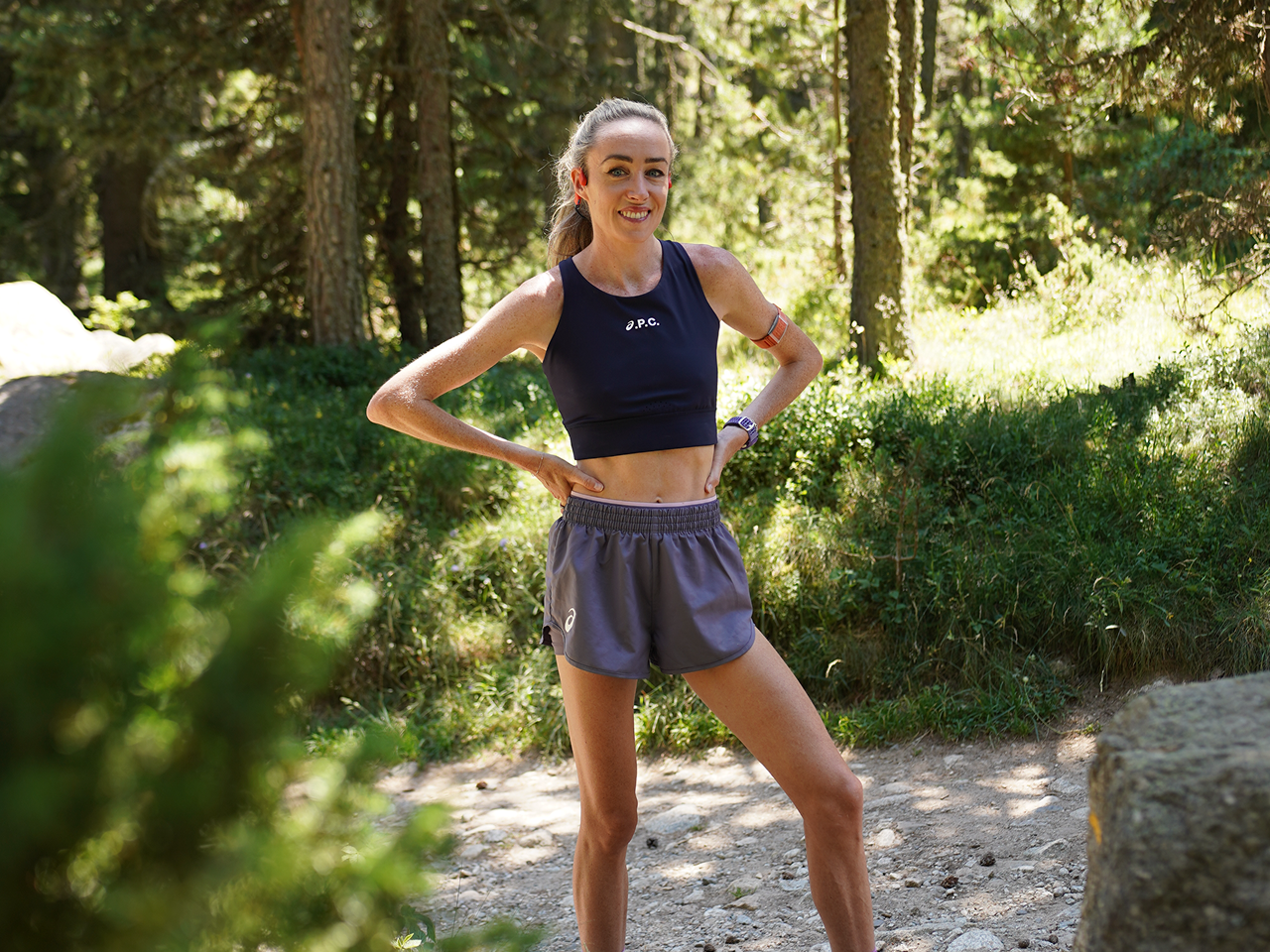What does it take to win an Olympic gold medal? How far does one have to push their body to realize such success? For Jakob Ingebrigtsen, his 5,000 meter gold was the result of many years of experience accompanied by a meticulous attention to detail in his training. Consistently working with his brothers Henrik and Filip over the past decade, the trio of brothers have found the recipe for success. But what does this require in terms of training mindset? How do they know the training has worked, and ultimately, what does it look like to push your body to its absolute limit? COROS sat down with Jakob following his Paris 2024 gold medal run and discussed his approach to training for peak events, along with the data from his 5,000 meter performance.
Product Worn: COROS PACE 3
Analysis Tool: COROS Training Hub
2024 Training
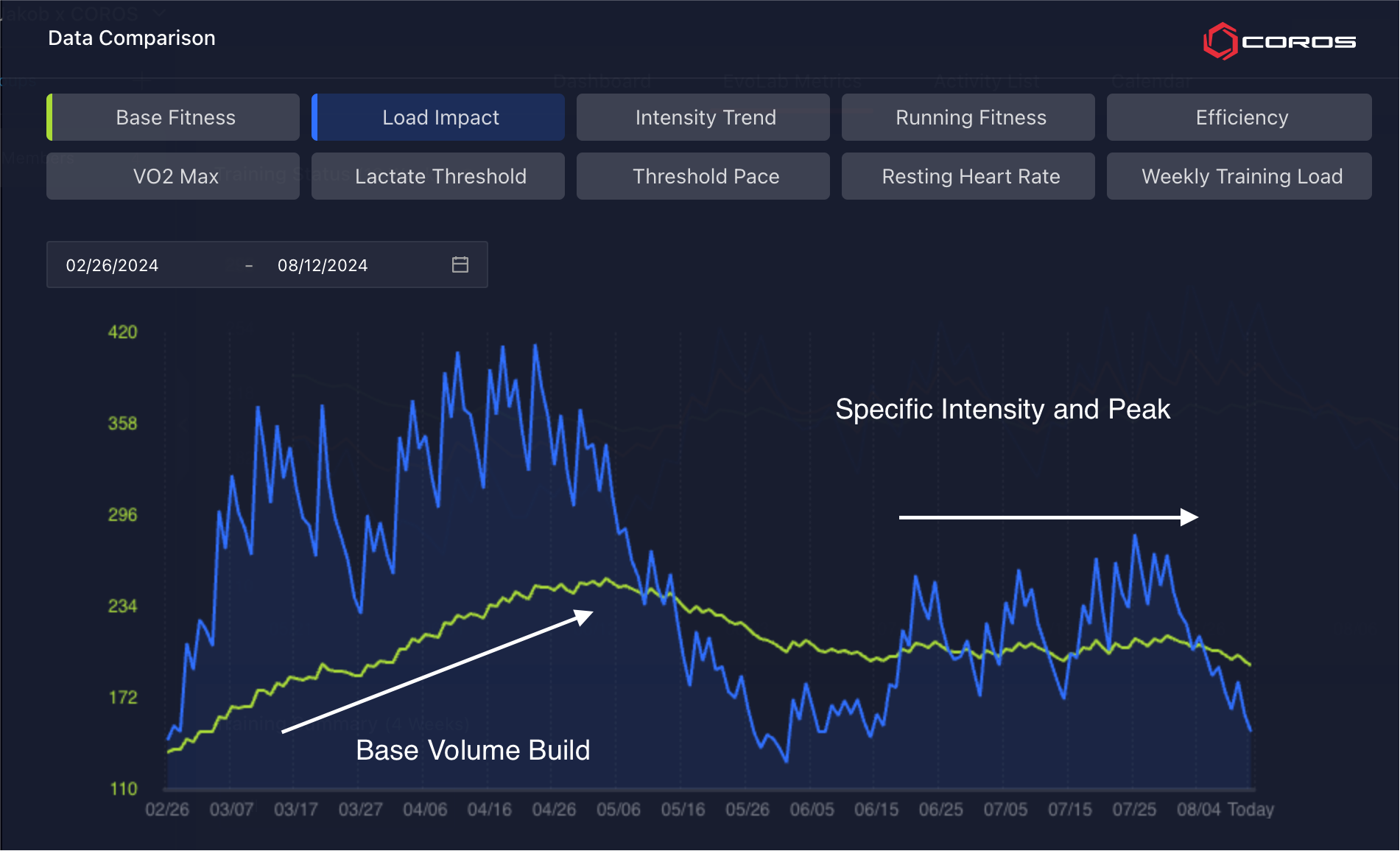
Jakob's Base Fitness shows a clear build in volume early, followed by a prolonged period of intensity
Jakob's training didn't get off to the start he was hoping for. After recovering from a winter injury, Jakob wasn't able to start consistent training as early as he had planned. "Middle of February is when I started being consistent and was able to run every day. However, once I was able to train, everything from then on went perfectly." Jakob started with 8-weeks of high volume and a more conservative approach to intensity. From there, he did a light taper ahead of the Prefontaine Classic, but noted "I wanted to taper lightly, but not enough where I would sacrifice the base that I had just established."
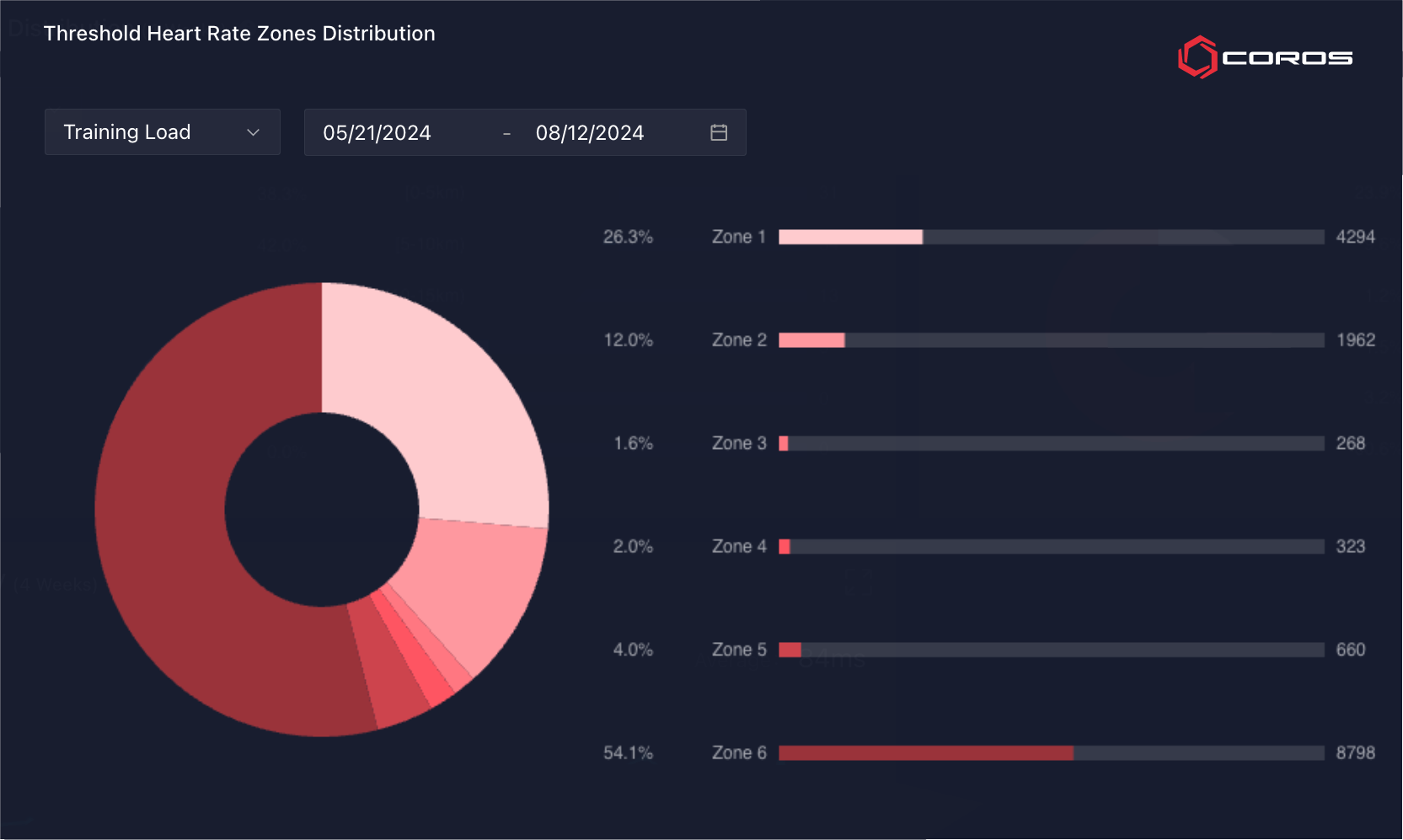
During Jakob's peak training phase, the majority of his effort is either Zone 1 (recovery) or Zone 6 (pushing VO2max+)
Following his base build during the spring of 2024, Jakob shifted gears. "I started seeing very strong success. I was on the edge of what my body could handle in terms of volume and intensity. We were able to do everything we planned out, but it wasn't without risk... We pushed our training perfectly."
Trusting Fitness on Race Day
What sets Jakob apart from his competitors is a certain trust in his training and leveraging his full effort when it truly matters. Jakob noted that "Many athletes want to test their fitness in training during peak seasons. We however have a different approach. We think of training as if we are farmers, and what we are harvesting are carrots. Many athletes want to pull the carrot out of the ground early to see what they have made, but in reality, once you test it, you can never put it back in. We won't pull the carrot out of the ground until race day, but trust that our preparation and experience will give us the best odds of success."
While some athletes may be nervous with this approach, Jakob and his brothers are confident given their monitoring of data on a daily basis. "We have a lot of experience with collecting data from the same sessions throughout the year. We can compare as we go to ensure I'm consistent, not overtrained, and exactly what the numbers mean for where my fitness is."
Peaking For Key Events
While Jakob and his brothers are monitoring everything they do in training, he also notes that there is a certain level of luck when competing at the highest level. Ultimately, you can train your entire life to be great, but on any given day, something can change or happen that doesn't go your way.
While there is luck, the best way to increase your odds of success is to limit chance and control everything within your power. "If we were to race 10 times, we may lose a few of those, but our goal is to ensure we are as ready as we can possibly be. It comes down to data input and being able to adjust based on what we are seeing. We are always looking for patterns and knowing what works...this makes it easier to be lucky when you have all of the information."
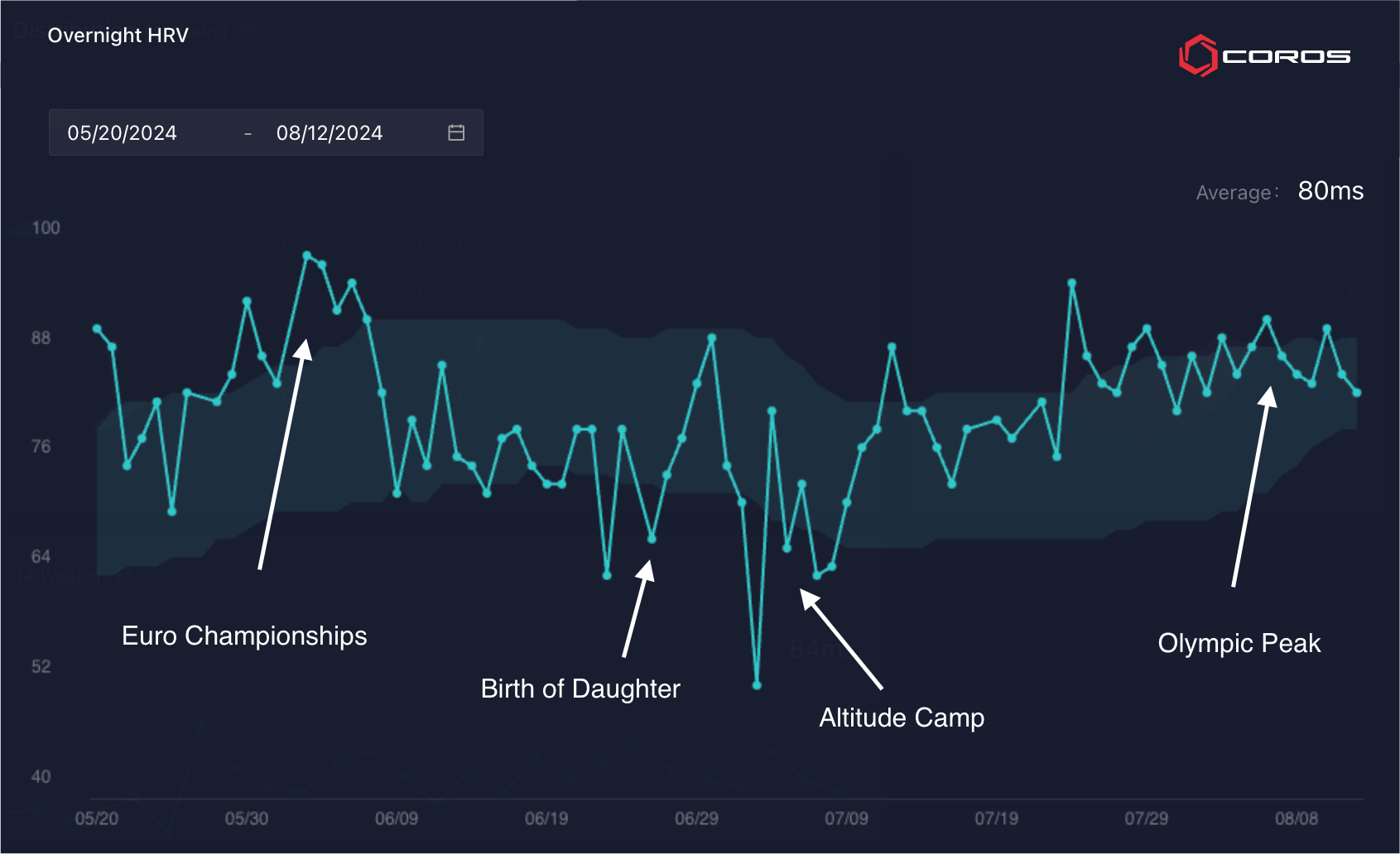
Jakob's HRV showing the difference in readiness between peak events, and training periods
Similar to Jakob's carrot analogy, he has a routine when it comes to resting before peak events. As seen in the HRV data above, Jakob has data available to see how well his body is ready to respond to changes. When you look at the patterns and trends of Jakob's HRV throughout the summer portion of his schedule, you can see that he knows exactly what he is doing to ensure he enters his event at the peak of his ability. "I have an automated plan now that my body is very used to. I have the same feeling each time to know when I'm in a good spot."
Olympic 5,000 Meter Analysis
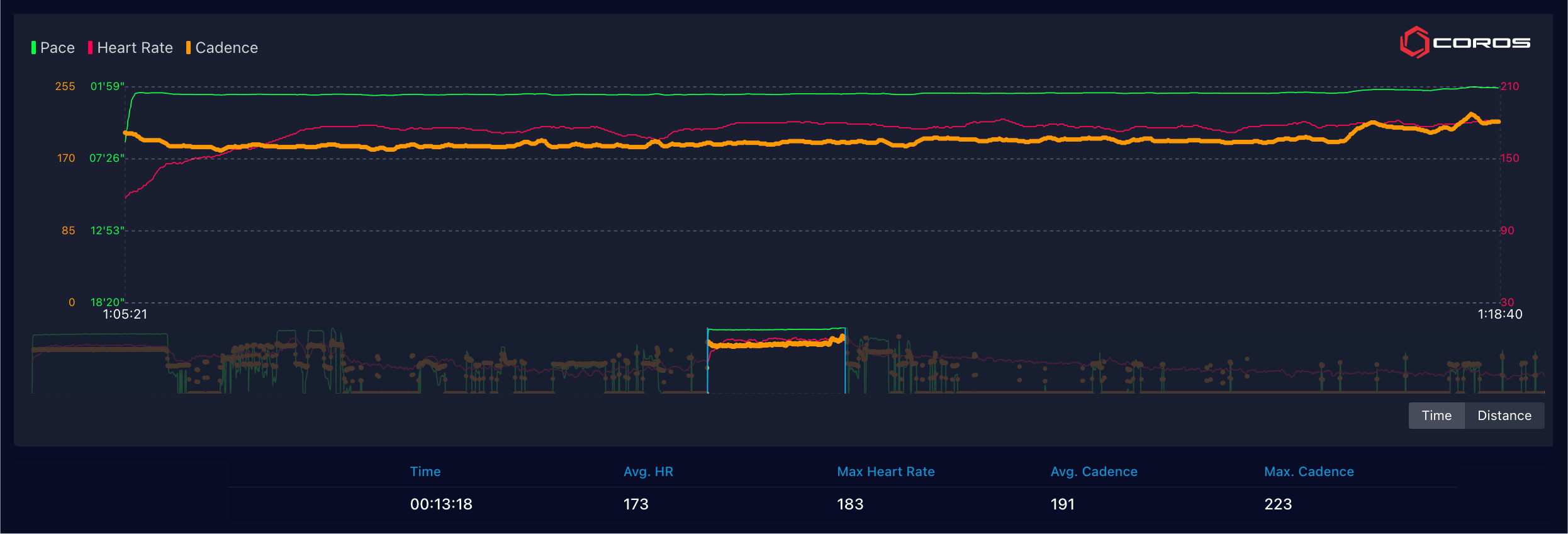
Jakob's Olympic 5k Data as seen in the COROS Training Hub
While Jakob was unsuccessful at earning a medal in the 1,500 meter in Paris, he was looking forward to the 5,000 meter given the different demands it puts on your mind and body. "The 1500 is so rapid that you don't have time to think. Whereas the 5k you're struggling, but have more time to be tactical. Regardless if I run the first 4k slow, it still hurts. My lungs and legs are burning, but with the experience I have, I know how to use my energy in the right way."
Throughout the entirety of the race, Jakob utilized his energy to perfection. While he was able to conserve energy in early portions of the race, he also pushed forward at key moments to set himself up for success. As we broke down the data with Jakob, we took a closer look at his heart rate zones and how his 5,000 meter performance matched up with his actual experience. "Being able to review the data and how it matches up with the actual race gives me great insights into knowing how I raced was correct."
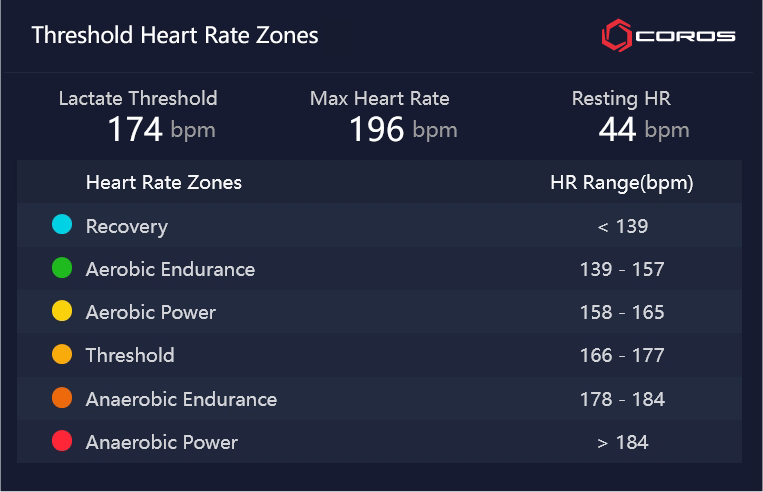
Jakob's Heart Rate Zones
Start to 1,000 Meters
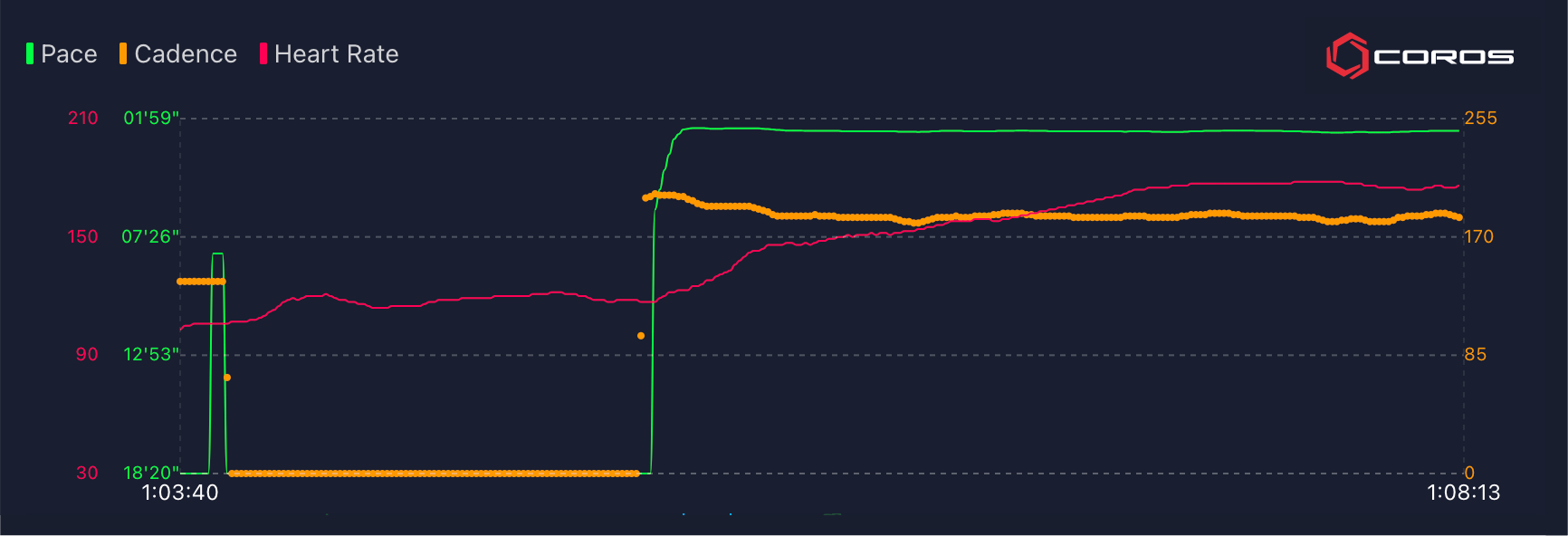
Jakob's data from exiting the staging tunnel and waiting on the line, through the first 1,000 meters of the race
Jakob starts his watch while warming up for the event, and keeps it running until after his cooldown. Utilizing the COROS Training Hub, he is able to select the race portion for data review following events.
HR before starting gun: 121 bpm
Avg HR: 162 bpm
Max HR: 178 bpm
Avg Cadence: 185
Max Cadence: 200
As Jakob left the staging area, the crowd roared as the athletes lined up for the final. You can see from the data above that Jakob's heart rate rises as he awaited the starting gun. As the race started, the pack began at a casual pace which allowed the competitors to settle into their positioning. Jakob's heart rate increased to his Threshold Zone of 166-177 bpm within the first 800 meters of the race. From there, he settled in.
"I was expecting a faster race from the gun. I was a little disappointed, but for my positioning in the field I was a little more in front than I would normally be. We went through the first k in 2:49 which is very slow. I knew at this point, for every meter that passed at this pace, nobody was going to get tired…. So it was going to be a ramp up in pace"
1,000 meters to 3,000 meters
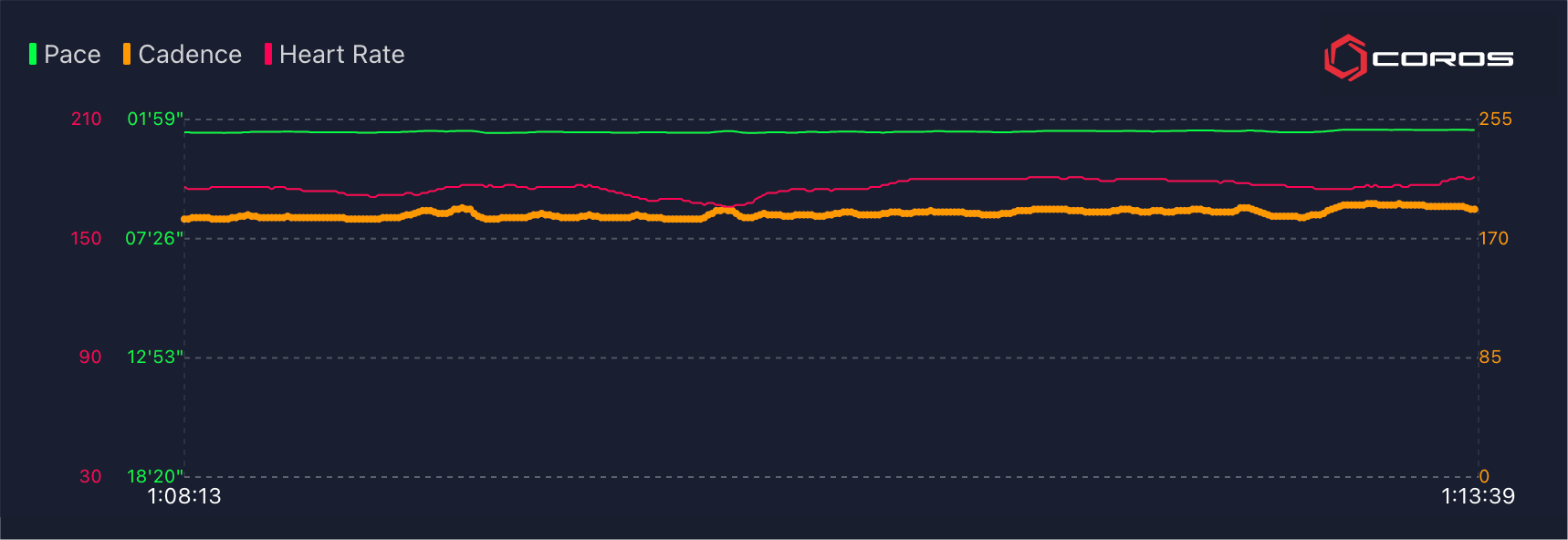
Avg HR: 176 bpm
Max HR: 181 bpm
Avg Cadence: 188
Max Cadence: 195
Throughout the next two kilometers, Jakob found his spot near the front of the race, but allowed others to set the pace. Individuals were moving to the front to lift the pace as can be seen by the increases of cadence and heart rate throughout. As the 3k point inched closer, Jakob was pushing at 180-181 bpm which is above his Threshold and entering into his Anaerobic Endurance Zone (VO2max). The pace was increasing, but still Jakob held strong with a close eye on the lead.
"There was a slight increase in pace as we went. The Ethiopians started to settle in the front and we were running 62’s. People were struggling quite a lot at this pace. But I tried to stay up close to ensure if someone went sub 60’s, I was in position to match."
3,000 Meters to 4,400 Meters
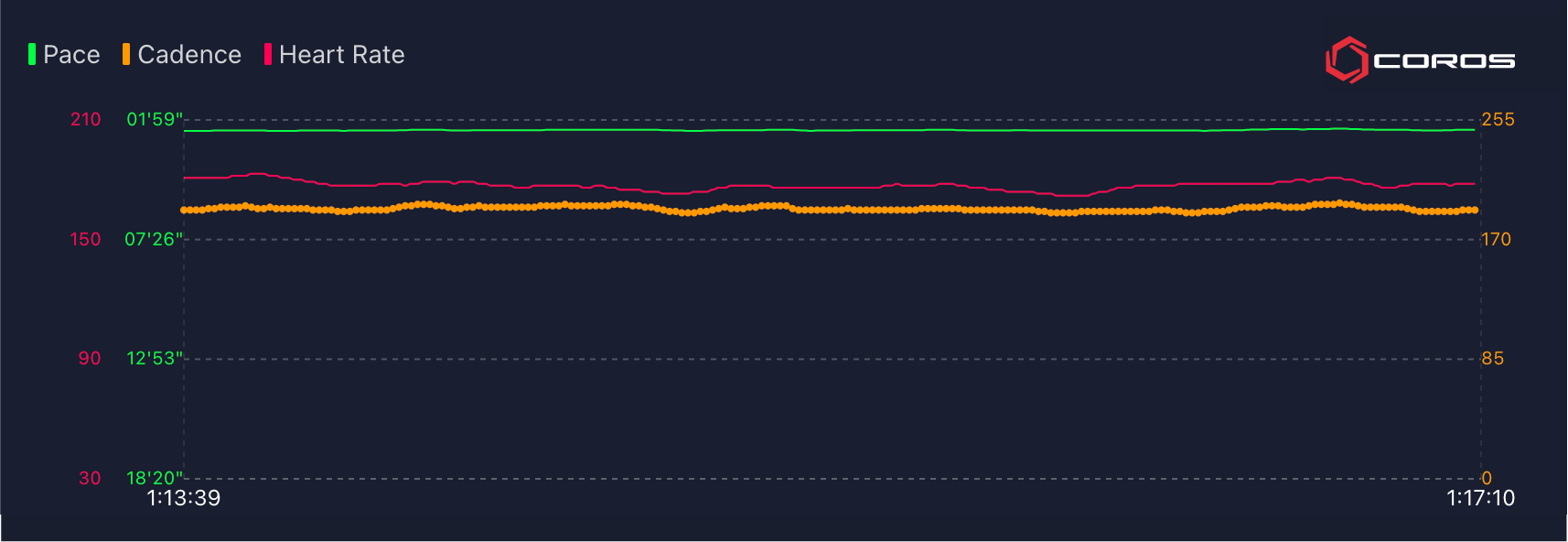
Avg HR: 177 bpm
Max HR: 183 bpm
Avg Cadence: 192
Max Cadence: 196
The pace was increasing now as the race continued to ramp up. Jakob had surged quickly after 3,000 meters with a cadence of 193 which lifted his heart rate to 183 bpm. While the pace remained hot, Jakob was able to keep his heart rate just above his Threshold level for most of this section as his training was paying dividends. Holding steady in the pack, Jakob was looking around at his competition to see what was happening and how they were feeling.
"I surged to get towards the front and to cover moves. Near 600 meters to go I was boxed in… If you’re making a move, you’re spending a lot of energy because we are at 60 second laps. As people are passing me at this point, I know they are burning energy that they don’t have at this point, so as I was boxed in, I knew others were hurting."
Final 600 Meters to Gold
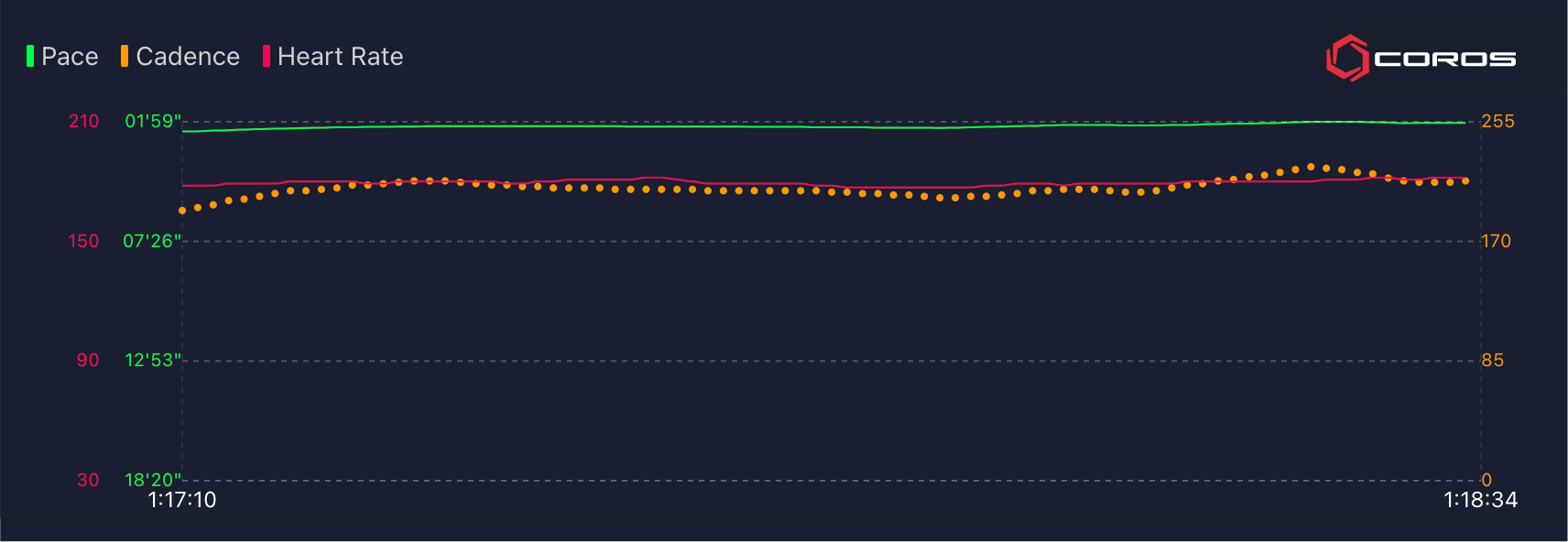
Avg HR: 179 bpm
Max HR: 182 bpm
Avg Cadence: 208
Max Cadence: 223
This is what it takes. When a gold medal is within your reach at the highest level... you go for it. With 600 meters to go, Ethiopia's Hagos Gebrhiwet took the lead in what looked to be a run for the podium. Having done his best to hold position throughout the race, Jakob was able to mark the move and catch his competitor with just over 200 meters to go. As he caught Gebrhiwet, he continued on with the pace and ran for glory.
"Gebrhiwet made his move at 600 to go. I was boxed in at that point… but we are moving fast so I was hopeful it would open up. I had been watching my competitors for the last few laps to know how they were feeling. I tried to get out of the rail, but nobody was able to move out of the way because we were so tired. Eventually I was able to make a move and get to the outside, and I was very cautious to not sprint too fast because I have done this before. If you go too hard with 500 to go, the last 200 is very difficult. So I used a few seconds to catch up to him. On the back straight I could feel he was tiring up, and since I used so much energy to catch him, I just had to keep the same pace as I couldn’t kick again without using too much. I saved just a little bit for the home straight and kicked."
Celebration and Ringing the Bell
Following Jakob's victory, he did what all Olympic Champions were able to do within athletics at the Paris 2024 Olympic Games. It was his turn to ring the bell of Notre Dame to celebrate his victory. "I had seen the other athletes getting this opportunity and I wanted it as well. It was surprisingly fun and I didn't want to stop. Knowing the importance of the bell was quite cool, and I'm glad I was able to do so."
Jakob's heart rate spiked from 145bpm to 161bpm as he enjoyed the pure joy of being the 5k Olympic Champion.
Jakob Ingebrigtsen and COROS
Jakob leveraged his COROS PACE 3, COROS Heart Rate Monitor, and COROS POD 2 throughout the entirety of 2024. Through the use of these tools, Jakob was able to gain more insights into his training and racing than ever before. "It's very cool to compare events or look back on races such as this to see if it matches up with my experience. It clearly shows the use of energy and how important it is to use this correctly. You want to keep as steady as possible otherwise you can't be successful in the 5k. Knowing that I surged to move up at 1k to go, and then again at 600 to close the gap is perfect. I think if I would have raced this any other way it would have played out differently."
Jakob's final note to all those looking to improve, is to first keep track of your training. Ultimately, training is what will lead to success, and put luck in your favor. "You can utilize it to see if you're training too hard, too little, or too fast. It's very important that you keep your eye on this to ensure you're ready when it matters most"
To learn more about COROS, visit www.coros.com

/filters:quality(90)/fit-in/970x750/coros-web-faq/upload/images/350242628260a1cf8120a10efd737ca4.png)
